
Them-System
2
‘What makes it Them is us.’
Phillip Picardi and his LGBTQ team are giving Condé Nast
an authentic queer voice. Meet Them.
By Raven Smith
Photographs by Brigitte Lacombe
In a roundabout way, Them was conceived through anal sex. In July 2017, Vogue’s cover story featured it-couple Gigi Hadid and Zayn Malick apparently ‘embracing gender fluidity’ by swapping clothes. It was a heavy-handed and tone-deaf approach to gender identity that outraged millennial readers and forced Vogue to apologize: ‘we missed the mark.’ Only a week before, little sister online publication, Teen Vogue, under the digital direction of Phillip Picardi, a then-25-year- old from Boston, had released a guide to safe anal sex, which said, ‘It’s important that we talk about all kinds of sex’. The use of ‘we’ here demonstrated the implicitly inclusive nature of the publication: peer-to-peer millennial discourse, rather than teacher-pupil education (albeit written by a millennial self-described sex educator). In a seismic shift, Vogue talking about millennials was eclipsed by Teen Vogue talking with millennials.
With Picardi overseeing its all-important digital output, Teen Vogue was pivoting from mini-fashionista editorial to voice of a new, alert, engaged generation. Typi ed by that sex-advice feature, Teen Vogue’s sincere lateral tone of voice and non-salacious practicality resonated, shrewdly harness- ing the power of the most underestimated group on the planet: teenage girls. Vogue’s little sister was woke and not going back to sleep.
Within days, Picardi – who was increasingly being recognized for spearheading Teen Vogue’s record-breaking digi- tal growth – was summoned to have lunch with Condé Nast’s artistic director Anna Wintour to discuss future opportunities. A kind of Condé Nast carte blanche. And so, the idea for Them, a next-generation digital platform produced by and for the LGBTQ community, was conceived. According to Condé Nast’s press release about Them, Gen Z-ers ‘support brands that take a stand on issues they believe in personally’ and ‘more than half of Gen Z identifies as queer’.
A social-change-focused LGBTQ platform was an inevitable and savvy addition to the company’s portfolio.
Channelling Gen Z’s energy into meaningful audience-first editorial is now Picardi’s raison d’être. As chief content officer of Them (a role he has added to his continuing duties at Teen Vogue), Picardi is responsible for a team chronicling next-gen millennial stories and voices, harnessing and amplifying these expressions of change. Them puts LGBTQ identity politics front and centre as previously specialized social-media discussions punch into the mainstream consciousness. Them is a pastel-coloured rolling newsfeed of verbal and visual expressions of the modern (predominantly US-based) queer experience. Its stories showcase the inter- sectional narratives that have often fallen between the gaps of our worldview. It is a mix of earnest activism and bold optimism: a tender (and eerily accurate) self-care monthly horoscope sits alongside pieces questioning queer representation at the Oscars, fat-phobia in the bear community, and assessing whether ‘Ancient Egypt was totally queer’. The platform is an uroboros, receiving feedback as it’s transmitting; Them’s audience simultaneously absorbs information and responds immediately, with commentary that shapes future stories, adding to the endless reciprocal Internet conversation. A stream of consciousness from a generation of evolving thinkers, with ideas being processed and published in tandem, Them is a thesis developing in real time.
Earlier this year System asked London-based writer and creative director Raven Smith to interview Phillip Picardi, the man the New York Times recently labelled ‘Condé Nast’s 26-Year-Old Man of the Moment’. The first time in February 2018 during London Fashion Week the pair shared a pit-stop high tea. For the second, a month later, Smith travelled to Condé Nast’s New York headquarters at One World Trade Center, where he also met and interviewed the Them team.
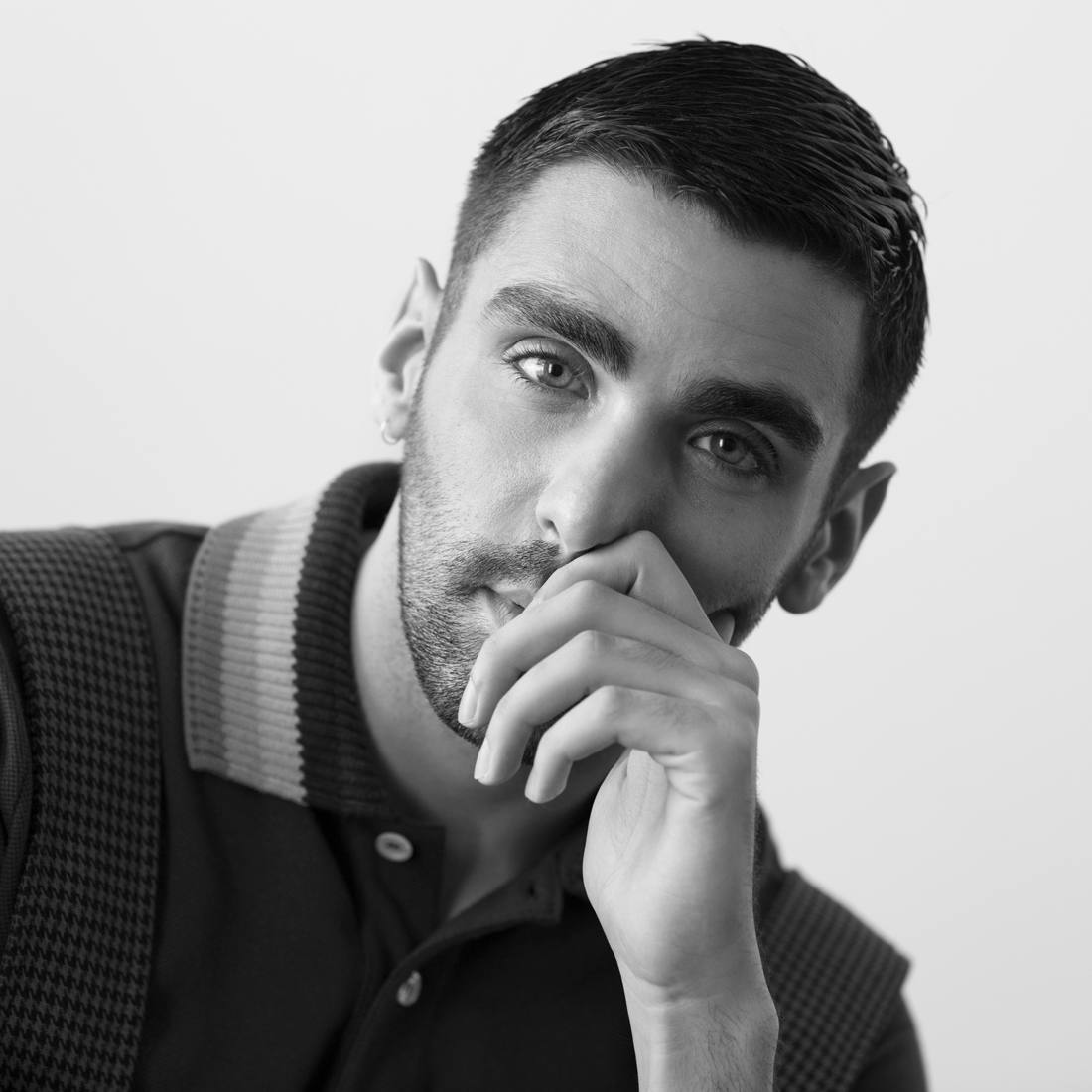
Phillip Picardi
Chief Content Officer
Part One London,
February 18, 2018
Raven Smith: OK, it is recording.
Phillip Picardi: So, I was reading that you had worked at Nowness and that you guys published a film a day.
A film a day, every day, for seven years. It was savage.
Looking at the media landscape now, I wouldn’t be able to identify a direct competitor to Nowness. There is probably more in the peripheral space. i-D does great artsy videos, so does SHOWstudio. Did you see the Gareth Pugh video they did last season? Oh my god, it is so filthy! It started with Olivier de Sagazan and Gareth Pugh layering themselves with moulding clay, painting a red phallus and then cutting through it so it looks like he was bleeding. It was shown in the IMAX theatre and the whole audience was like ‘eeuww’.1 Gareth Pugh’s Spring/Summer 2018 collection was presented in a film conceptualized by Nick Knight, choreographed by Wayne McGregor and starring ‘French philosophical artist’ Olivier de Sagazan. It premiered on September 16, 2017, on Europe’s largest cinema screen at the BFI IMAX in London. The unsettling 16-minute short, is perhaps best described as a Francis Bacon painting come to life in a zombie lm channelling Jonathan Glazer’s Under the Skin. The clothes are often difficult to see.
I like that though; things don’t always need to be palatable.
It’s interesting, sure. Some people are like, ‘Why does it have to be palatable to be consumed?’
How do you find managing that within the context of Them? Them is an interesting case study because I feel our mission has to be twofold. On the one hand, we are a queer staff, creating content for queer people and for queer consumption. On the other hand, we exist within this extremely normative corporation called Condé Nast. One could even say extremely white and normative. We see our mission as, yes, we are doing this for the queers, and then, what are we going to do to educate a wider audience about what we’re about? We can be ‘them’; we can be the LGBTQ community; we can be trans-youth. I think the best example of where we can be found is a video we did called How to Raise a Child.
‘I eventually just used pictures of half-naked men as my Myspace background, and changed my display name to: ‘I’m here, I’m queer, get used to it.’’
What’s the story behind it?
I grew up in a pretty conservative Catholic family and my sister was always very strait-laced: Boston college, bottle blonde and married to a banker. One of her best friends is raising a kid who essentially sounds like they’re transgender. The parents thought he was their son who wanted to dress in girls’ clothing, but there was actually more going on. I was inspired by this parent-child relationship, so we created a video with trans kids from all over the country interviewing their parents. It was viewed over 1 million times on Facebook, and the comments it got were very touching. There were a lot of parents who said, ‘Thank you for this, I have felt so alone’. We felt we did something good for these trans-kids growing up, but also for the families who are raising them.
That’s brilliant. It feels like video is the big medium at Them.
We did another video series called Bed-time Stories. We invited queer people to bed, and the rule was, you can bring something or someone. This one couple – I believe they were genderqueer– brought a massive dick candle. They were burning it in the bed while they talked about having sex with women, and it was kind of amazing. Then we had a couple who met as a cis couple and then one of them started transitioning. So the straight guy is now negotiating with the idea, ‘Am I gay?’
How have your own life experiences shaped the way Them operates, its outlook, its editorial tone, its mission? I grew up with three brothers and a very traditional dad, the type who came home at five and expected my mom to have food on the table. My brothers were hyper-masculine, super-athletic, played a lot of sports, and that was just not my template, not how I was born.
Where are you in the family?
I’m the fourth out of five children. When I was a kid, it became clear to me that I was extremely different just because of my family dynamics. And my mum was often protecting me, but even in her protection, which I think she considered benevolent, she was always telling me to straighten out in certain ways to avoid being teased or mocked.
And your family were aware that you might be ripe for bullying? Yes, my family was always trying to protect me from being bullied, but the reality of it was, I was just fine. They were maybe projecting experiences that they had gone through onto me. Growing up it was very clear that I was gay. I would go into my mom’s closet, put on her Manolos, and walk around in her lingerie. For read-a-book day in first grade, I took a mini Spice Girls book and I had a Spice Girls lunchbox and Thermos. I was like so gay.
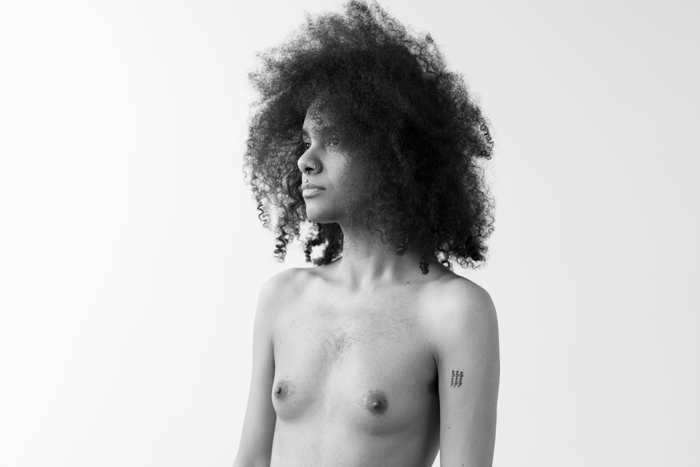
Tyler Ford
Editor
More
More
Tyler Ford
Editor
I have been an out trans-person in the media for five years. My introduction was through reality TV, appearing on the second season of The Glee Project. I started writing for Rookie shortly after that, and although I am now primarily a writer, it has been a pretty winding path and I’ve done other media work like speaking at universities and conferences. A lot of millennials and Gen Z are multi-talented: our lives and careers are more fluid than previous generations. What makes a Them story? It’s an authentic story from anyone in the LGBTQ community sharing their perspective and life experience. It’s a story that educates people, whether it’s to be more compassionate or more aware. It opens people’s minds from a perspective that maybe people haven’t heard before. It has a lot of heart. What makes it Them is us.
From day one.
When I came out at 14, I didn’t think my family would be surprised, but they were really shocked. I was shocked by their shock. These days, when young queer kids ask for advice about coming out, I say: ‘Tell your support network first and make sure that is not your family, so that you have somewhere to go when you’re out.’ I am sure most people’s coming-out stories are not easy. But my family reaction was to push me back in the closet; I had to lie to my little brother for months; I had to lie to my grandmother. A lot of it was sad and very unnecessary. But what came out of that is that I had to find my own voice.
Where did you turn?
I found myself to be more comfortable at school in that community, not relying on my family as much as my other siblings did. After a month or so of my mum not talking to me and my dad sending me to a Catholic therapist and all this bullshit, I eventually just went into Microsoft Paint, took pictures of half-naked men from Abercrombie & Fitch catalogues, and made that my Myspace background. And I changed my display name to: ‘I’m here, I’m queer, get used to it.’
A digital coming out.
Exactly. Like, ‘I’m going to show these assholes, I am not going to be silenced!’ Ultimately, I was out of the closet and had controlled my narrative, and I did so in a digital way, which is very relevant to my subsequent situation at Them.
How did people react at the time?
Basically, they were not hospitable to me existing and prospering in their school environment. The only thing I really knew how to do was just be true to myself and just stick to my guns. If it hadn’t been for my beginning and having been sti ed and trying to nd safety elsewhere I don’t think I would have been so comfortable in my own skin today. And so what I have learned through working at Teen Vogue, and hearing from kids over and over again is that there is this craving for representation.
‘On one hand, we are a queer staff, creating content for queer people. On the other, we exist within this extremely normative corporation called Condé Nast.’
Tell me more about that.
Well, representation isn’t just important because it needs to represent the world in which we live, it’s important because it can really save a life – by seeing yourself somewhere you know that there is hope for the future and you can see a template for yourself. You can begin to map out your dreams and your future and your success; what you want from your career, your love life and your family. We need this for trans-people and the non-binary community, where the template for life is still very much being drawn. I think it is essential that we create media spaces that are welcoming and celebratory and honest about what life is like. And I hope that Them can be a true dedicated space for them.
People are shaped by their upbringings. Did part of your process feel like a reaction to yours?
We are all where we come from and that is clearly a big part of me. If you are ever at a big gay brunch with a bunch of queer people, almost everyone does their coming-out story. And that is how you get to know each other as something that you all have in common. I definitely think that document- ing the queer existence with a thoughtful approach is important, especially for a mainstream publishing company like Condé Nast because we inherently have visibility and resources that make it easy for people to access our information.
Do you think in an ideal world that coming out will simply become less necessary?
I hope that one day coming out will be more of a choice; most queer people at some point are forced to come out, whether that is by other queer people or by straight people. I love that rebel spirit and maybe coming out will become obsolete, but I felt very liberated and empowered by my coming-out experience.
I think it is very character building for everyone...
Someone recently asked me, ‘What is your advice for kids in the closet who won’t come out?’ and I was like: ‘Do your thing. If you’re not going to be safe when you come out of the closet or be evicted from your home or if your parents are going to stop paying for your tuition, those are all serious deal breakers that you should really consider, hopefully with a professional to help you think about what your next step is.’ You can’t force someone out of the closet. The reality is that coming out means less safety and security for some people.
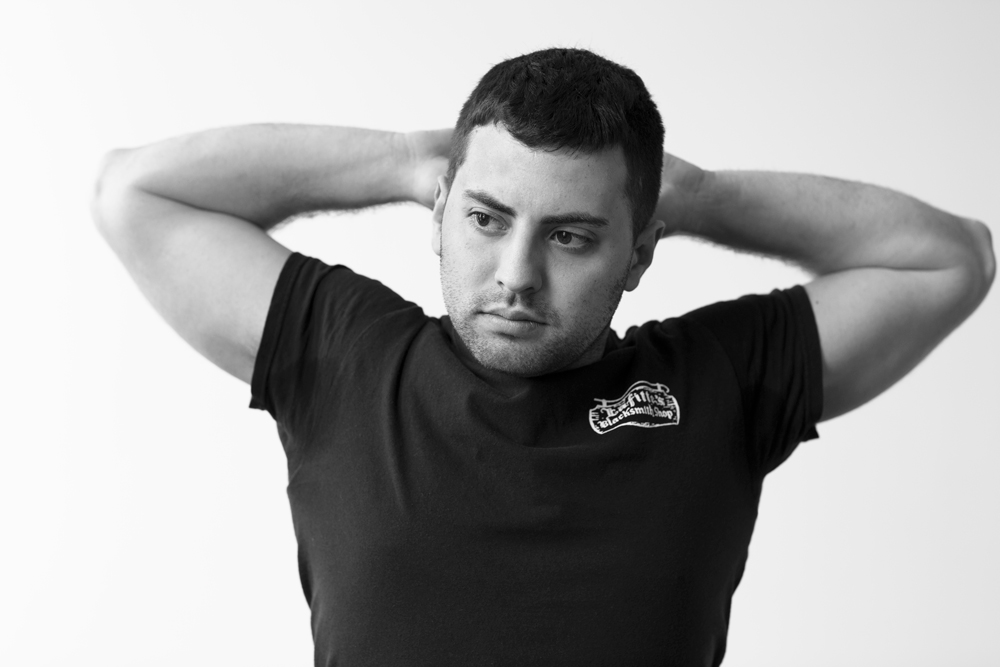
Tyler Trykowski
Senior Editor
More
more
Tyler Trykowski
Senior Editor
My career started as an intern at Playboy magazine, which might seem ironic, but it isn’t – the sexual freedom and first amendment issues at the heart of Playboy’s editorial philosophy are very much aligned with a queer political and social ethos. I know at first blush it might seem that a magazine for straight men might be the least queer thing in the world, but if you dig deeper, there’s a lot that’s very queer about Playboy. It also bears mentioning that the magazine and Hugh Hefner were a bastion of early gay and queer rights. My time there was instructive and valuable, and in many ways was a natural foundation for what I do now. After a number of years at Playboy, I jumped over to Vice and became LGBTQ editor before coming to New York and joining Them. I had been interested in queer stories for a while and I was editing stories about transgender men and about the trans-community in politics, so I had already manifested an interest in that in my work.
If you are coming out as a trans-person, if you are ‘passing’ and you don’t disclose that you’re trans in your work life, there could be violence on the other side of that closet door. It is not for anyone to say what you should do.
Where does your drive come from?
I don’t want to call this daddy issues, but people in my life expected less of me because I was feminine and gay and outspoken about it. They always underestimated me, shooing me away because my point of view was always too loud or radical. As a teenager, I felt ignored or stifled by the adults in my life. But the more I work with queer folks, discussing what ‘makes’ us who we are, the more I want to be wary of only framing ourselves in opposition to societal norms or power structures.
Did you always feel different?
I was always different, but there were moments where people in my life allowed me to taste the joy of just being myself. Like the Posh Spice doll my mom bought me but made me hide under my bed. Or when my little brother let me play the girl character in the video game without making fun of me. Or my sister painting my nails bright pink. And my grandmother getting me the ‘girl toy’ at McDonald’s. It was also in the freedom granted to me by my parents – the unspoken understanding that eventually happened that, no, they didn’t know what was best for me. That I had to find my own way.
You faced backlash and acceptance. Are you driven by both?
I’m so tired of queerness being shaped only by tragedy, and queer stories being compelling because of their melancholy. Lena Waithe2popover 2 said that our differences and our queerness are our superpower. I much prefer that. That in some way, we are a part of this community of extraordinary beings. I like to think that what makes me ambitious is that I was always a little different to the people around me, and I was always the only one. And now here I am, fighting for the opportunity to be surrounded by a bunch of people who are unique and exceptional in ways that are complex and worthy of praise and attention.
Fuck childhood tragedy, right?
I’m not, and I refuse to be, just a sum of childhood sadness. I come from love, and the understanding at a very young age that love is complex and hard to understand and doesn’t always say the right thing or doesn’t always feel the way you expect it to. You have to believe love is there, even if it’s deep down, and you have to be willing to fight until it surfaces.
‘I’m so tired of queerness being shaped only by tragedy. Lena Waith said that our differences and our queerness are our superpower.’
What took you from your mum’s Manolos to Teen Vogue?
Back when I was 18, just before I went to NYU, I emailed the editor-in-chief of Racked, which at the time was a sample-sale blog, and I asked for an internship. I got hired after a phone interview. I basically went from freshman orientation to fashion week back-to-back, which was quite an experience. Then, I was on fashionista.com, and I saw that Teen Vogue was hiring a web intern.
So you’ve always loved fashion?
No. In fact, when I realized I was definitely gay, I got really self-conscious and was really trying not to be interested in fashion. After I came out, I ended up in the magazine aisle and I picked up Vogue; I remember poring over it that day. Vogue was full all of this stuff that was just wild to me. I had never seen prices like that. I didn’t know that Chanel made clothes! I had no idea about this entire world.
I love that.
A friend of mine and I took a car road trip to go and see the Model as Muse exhibit at the Met.3popover 3 We drove like four hours there and back, just to go see this museum exhibit. But that was the power of Vogue and when I was a teenager, there was something in Anna’s editor’s letter or a feature in the magazine that was about gay marriage.4popover 4 I remember mainstream media not really showing us that they even recognized gayness or queerness at all. There was a line in the piece saying something like, ‘...the fashion community should stand behind LGBTQ equality’. And I remember it being burned into my retinas and thinking this is what it feels like to be seen and heard and represented. That is when I started having serious ambitions of working at Vogue. When I started working at Teen Vogue, I loved everything about the spirit of it and its slightly underdog status: we worked really hard and things were a bit scrappier compared to Vogue. We had less staff, we had to fight for access, so it was so much more rewarding. We had a lot of freedom too, editorially, to pursue our voices, which I loved.
I get the impression that Teen Vogue changed massively, from being about what prom dress to wear into conversations that people were actually having.
Yes, when it first started, it was really designed as a magazine for a teenager who would later graduate to reading Vogue. But it’s important to remember the context at the time: that was when Paris Hilton was on the rise, and so was The Hills,5popover 5 and Teen Vogue was part of these major watershed moments in pop culture. And that was epic, but it was a different time. Now we have this generation that has had access to the Internet since they were all born; they have unbridled access to so much more information than any other generation, so in many ways are much smarter. And their perspective has changed. They are the most diverse generation in history. They don’t see themselves re ected in a lot of publications a lot of the time, so we had to shift Teen Vogue. Honestly, Teen Vogue should shift every four years or so, like when you graduate from college, you need to recycle based on the incoming class’s priorities. So, what we did was just common sense.
I have heard you say that when you work on a woman’s publication, you don’t just talk about clothes and beauty. Can you expand on that?
Growing up, I also read GQ. It covered news and politics, sports and culture, but it’d always take fashion and grooming seriously as well. Then you’d read women’s magazines and politics never got the same real estate there. There was this dangerous assumption that women wouldn’t be interested in politics, so you put it in a men’s magazine. When I was growing up, so many girls were reading GQ, because they were interested in that perspective and point of view. Why weren’t young women being treated that way, too? That’s what I was asking myself.
‘I was given insider info that Condé Nast’s corporate contingent was concerned we were too isolationist; that we’d cater to too small an audience.’
Where did you first get a chance to push that editorial stance yourself?
When I was at Refnery 29,6popover 6 Mikki Halpin was the editorial director. She was launching the site’s news section. I was in the beauty department working on a story about cornrows, and I posted on Instagram a photo of two white women wearing cornrows. Someone commented: ‘This is cultural appropriation and you are dumb if you think this is cool.’ So, I bought this book called The Encyclopaedia of Hair and read about the history of cornrows and spoke to Mikki and we developed a broader story out of it. I ended up meeting all these incredible women and I realized we can go deeper on beauty. It was a really formative experience and we went on to take as much pride in everything we did for beauty as the other teams were doing for music and culture. Treating one subject as importantly as another. When I was at Teen Vogue, I felt like we needed the same spirit of reporting that they had at GQ. That was my take.
Let’s jump to Them. It is such a strik- ing symbol of our times, given that it is a Condé Nast title, and not an outsider indie. How did you pitch Them? Did you experience cultural issues with the people you were pitching to?
We were preparing for the mostly straight board meeting. I was given some insider info that the corporate contingent was concerned we were too isolationist, and that the brand would cater to too small an audience. We had to go show them the wide spectrum of queerness, where it touched on all lives. So we made a video that said, ‘This is not a niche culture, this is the culture. This is not a moment, this is a movement. This isn’t just about them, it is about all of us.’ And so the tagline became, ‘It’s about all of us’. For me that just means we’re all a little queer or we love a queer person or there’s a queer person in your family who we love.
How was the pitch experience itself?
There were so many people around the table, these suited executives, and it came down to the end of the meeting, when the CEO looks around the table and says, ‘OK, so what does everyone think?’ Everyone is raising their hand saying: ‘Do this, do this, this is great, this is now. This is the moment and we need to do it. We need to give this a chance.’ I mean, I have been at this company since I was 18 years old, so looking around that table and seeing all those people’s support was really beautiful. I actually went to the bathroom right after and cried, because I was so nervous and just so scared it was still going to get turned down. I’d been working on it for months, and I didn’t know what I would do if it didn’t get green-lighted. I was going to have to quit my job, and so I was thinking, ‘How am I going to pay my rent?’
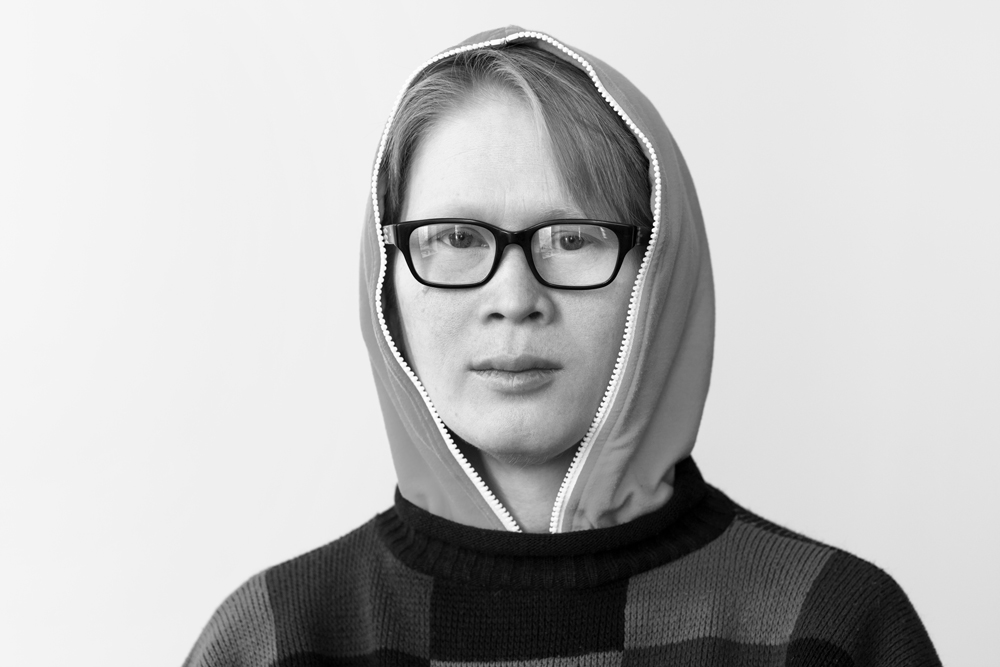
Meredith Talusan
Executive Editor
More
more
Meredith Talusan
Executive Editor
What I love about millennials is the blurring of the personal and professional. Older people pretend they have professional and personal boundaries and then communicate in a way that means their personal relationships are not visible to other people. That’s how invisible centres of power form. It is good for people to be transparent. Yes, I am trans, but I also have an editorial and digital background, so that puts me in a unique position to engage in projects that push the envelope. Amplification and transparency, that is a really big value of mine as a journalist and editor – I want to do ambitious and groundbreaking things.
So everyone at Condé Nast has been supportive?
People get really excited about working on Them. We had tech specialists and engineers raising their hands to work on the back-end of the website. We had creative people dying to work on it, even on the pitch.
Do you consider it a difficult job?
Sometimes it can feel hard. Having worked on Teen Vogue and Allure and given that Them is my third brand at Condé Nast in a senior position, I am realizing I’ve been given a lot of freedom and I am really grateful for that. I know for a fact that is directly because Anna Wintour was passionate about Them. When Anna is your boss, you are almost less afraid because you know this very important person is right behind you. I can talk to her about any story we publish. She has an incredibly open, reasonable mind about this stuff, so I am not afraid. Everyone has been open to this idea of pushing the envelope and having a small brand with the core notion of experimentation.
The level of freedom you are being given seems signi cant. Do you think this is unique to you?
I don’t know. I wonder what Will Welch7popover 7 would say to that question, because look at GQ Style, that is such a cool brand, and Bon Appétit is cool, too. I love it! Even Teen Vogue. The things that we are publishing at that brand, sure, 10 years ago you never would have seen. It’s hard for me to answer that question.
In terms of the stories you publish, what is your balance between editorial and branded? How many people do you have to please?
I have to please countless people! This brand wasn’t going to launch until we could prove the concept and line up advertisers. For about four to six weeks, Anna, myself and Pam Drucker, who is the chief revenue officer of the company, were meeting with CEOs of companies, getting them to sign NDAs, trying to get people on board. Of course, Anna and Christopher Bailey are really close, so Christopher heard about this rst, then we took it to Google and then to Lyft. Luckily with every call we went on, people were excited about it, so it happened really fast.
What are Them’s business objectives?
Them is interesting because we don’t have ad pages or banner ads to sell like more traditional digital media. What we are looking to do is create customized content with a partner or find advertisers who are interested in creating something that will amplify the voices of the LGBTQ community.
‘There is actually a team at Google called the Gayglers. It’s an LGBTQ group of Google employees and they are so excited about Them.’
Do you have a specific example?
Google helped us with the launch sponsorship, which was conceptualized around the theme of a talk show we launched on YouTube. Their team gave us great feedback and access to talent and great ideas for how we could really make those concepts sing on YouTube. Beyond that we are looking not just at content that exists on Instagram or just on the site, we’re also thinking what Them could look like as a lm festival, a merchandise collection or an event series, for example. These are things that we will be exploring next year.
Are you continuing to make specific content with Google?
Yes. The rainbow check was our big thing with Burberry.8popover 8 With Lyft, we did a video with Tommy Dorfman9popover 9 where he rode around with a Lyft driver all day. He went to different stores, picked out products and then he took them to the Ali Forney Center, which is like the Albert Kennedy Trust here.10popover 10 For Google, we are doing interactive maps, because this year we have the mid-term elections. Do you know what that means?
Not really, but tell me and we’ll pretend I said yes.
Our presidential election is the big thing, but midterm elections are for Congress, and they are held two years later.
And that is for who represents each state. See, I’m learning.
You’re doing great! We are doing a state-by-state guide to LGBTQ equality, and then ranking the candidates who are running based on LGBTQ factors. Google said: ‘We’ll give you the Google maps for the project and you can work with Google engineers on building it.’ There is actually a team at Google called the Gayglers. It’s an LGBTQ group of employees at Google and they are so excited about Them. It is amazing to work with a partner who is for pro-LGBTQ legislation. They helped us launch a couple of YouTube shows. We launched a series called The Library this past week, and we’re about to launch InQueery, which Google helped us launch. It’s where we de ne terms and a queer lexicon. We’re just getting started!
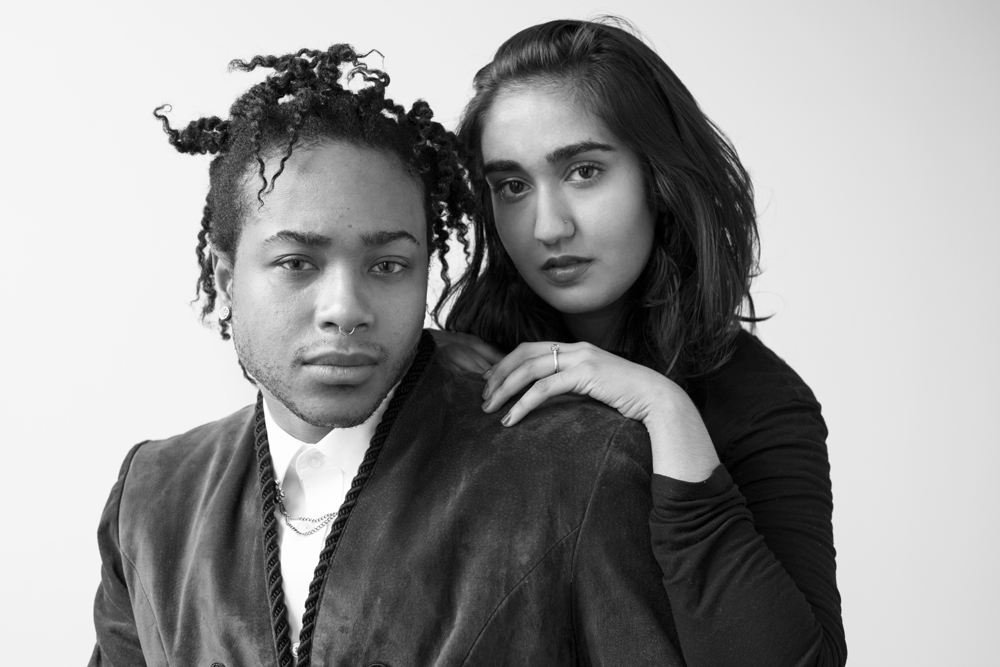
Devin-Norelle
Editorial assistant & Contributor
Aamina Khan
Community Manager
More
more
Devin-Norelle
Editorial assistant & Contributor
I am new to the Them team. I was working at J.P. Morgan before, which is obviously nance and a very different culture. As a person, I exist within grey areas, and so does my gender. At J.P., I didn’t have much room to express those areas, so I began keeping a blog during off-work hours, as a way to humanize transgender people for a cisgender, heteronormative audience. As I began connecting with others, I realized I needed to be in a work environment with people who thought in ways I do and desired to bring about change. I don’t fault the individuals I worked with, my co-workers were at times very progressive, but social progression at J.P. almost always hits a glass ceiling. When I hit that ceiling, it became the wrong environment for me. Over time, my writing evolved, becoming a much bigger deal than I ever could have imagined. Blogging transitioned into activism, my pro le grew, and I was introduced to Meredith [Talusan]. Soon after, Phillip began following me on Instagram. I guess he liked what he saw because eventually I was hired to work with Them!
Aamina Khan
Community Manager
It would have meant a lot to the 12-year-old me to see people who are not only out, but also very unapologetic about who they are. It was hard to come to terms with being a queer woman because I didn’t see representations of brown people being queer or bi. At Them, we have so many people of colour in our content, so perhaps it is easier for younger people to imagine themselves as adults. I think seeing people who have made it to the other side, landing in adulthood, is reassuring. I think that there is value in having adult examples to follow.